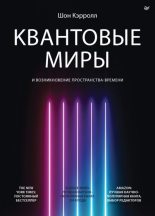- 1
- 2
On the Etymology of the Name of Mt. Fuji
Alexander VovinMt. Fuji (Fujisan, 富士山), the highest mountain in Japan (3,776 m.), straddles the border of modern Yamanashi and Shizuoka prefectures, but in Ancient Japan it belonged to Suruga province (駿河國), which corresponds to the central part of present-day Shizuoka prefecture. This majestically beautiful mountain, which is a perfectly shaped conical volcano, has become a symbol of modern Japan.
 Mt. Fuji as seen from Hakone
author’s photo (may 27, 2012)
Mt. Fuji as seen from Hakone
author’s photo (may 27, 2012)
Nowadays we know many things about Mt. Fuji, such as the history of its worship as the body of a Shintō deity, its historical eruptions, its vegetation and natural habitat, the history of its climbing, etc. For the purposes of this article, the most important information is that Mt. Fuji is nowadays a dormant volcano (MdJ kyūkazan 休火山). The last historically recorded eruption occurred in 1707 AD, but before this date, it was quite active. The first historically attested eruption was on the sixth day of the seventh lunar month of the first year of Ten’ō (天應) (July 31, 781 AD). It is recorded in the that on this day Mt. Fuji rained ash, and where the ash had fallen, all leaves withered (SNG 36.204).[1] Between 781 and 1707 AD Mt. Fuji erupted at least ten times (or, this is what historical sources tell us). So the last four hundred years have been very peaceful, but Mt. Fuji is far from being dead, and it can awake any time. What we do not know, however, is the etymology of its name, and it appears that it was already obscure in the early Heian period. This gave rise to endless folk etymologies through the subsequent ages. The first of these folk etymologies can be found in the closing lines of the late ninth or early tenth century text Taketori monogatori (竹取物語):
かのたてまつるふしのくすりに又つほくして御つかひににたまはす 勅使にはつきのいはかさといふ人をめしてするかの國にあなる山の いただきにもてつくへきよし仰給みねにてすへきやうをしへさせ給 御ふみふしの薬つほならへて火をつけてもやすへきおほせ給そのよ しうけたまはりてつはものともあまたくして山へのぼりけるよりま むそのやまをふしのやまとは名つけけるそのけふりいまだ雲のなか へたちのほるとそいひつたへたたる [The emperor] placed the immortality elixir that she gave him in a jar, and gave [it] to the imperial messenger. [He] summoned a man called Tuki-no Ifakasa as an imperial messenger. [The emperor] gave the command that [Tuki-no Ifakasa] must bring [this jar] to the summit of a mountain that, as they say, was in Suruga province. [The emperor] explained [to Tuki-no Ifakasa] what [he] must do at the summit. [Namely, the emperor] gave the command that the immortality elixir and the letter must be put on fire and burnt together. Upon hearing that command, [Tuki-no Ifakasa], leading many soldiers, ascended to the mountain. From this time on, [the people] called that mountain the Mountain of Immortality. [The people] continue to tell a story that the smoke [from that fire] is still rising to the clouds[2]This folk etymology suggests ‘immortality’ (OJ pusi, 不死), but as we will see below, the OJ name of the mountain is clearly puⁿzi, not pusi. In addition, (不死) would be a placename based on Sino-Japanese, which seems to be unwarranted for Ancient Japan. Quite a host of such Sino-Japanese folk etymologies, such as ‘having no equal (lit. no second)’ (OJ puⁿzi 不二), ‘happiness and benevolence’ (OJ puⁿzi, 福慈) and ‘not ending’ (OJ puⁿzi, 不盡), appeared over the ages, but they should not entertain us here any longer. Lack of agreement between these different proposals, their reliance on Sino-Japanese, as well as the absence of any evidence presented all point to their arbitrary and ad hoc nature. John Batchelor, the great pioneer of Ainu Studies, proposed an etymology that Mt. Fuji (Fuji no yama in his reading) represents a hybrid of Ainu huchi, fuchi, fuji ‘old woman’ and Ainu unji, fuchi, huchi ‘fire’ on the one hand and Japanese yama ‘mountain’ on the other, with an ultimate explanation that Fuji means ‘Goddess of Fire’ (1928: 57). In spite of its possible superficial attractiveness, this etymology is seriously flawed for several reasons. First, Ainu fuchi, fuji ‘old woman’ and Ainu fuchi, huchi ‘fire’ are lexical ghosts, not attested anywhere except in Batchelor’s own dictionary (1938: 171). Even there, the f‑ initial forms are not present. Second, Ainu h, unlike MdJ h does not go back to *p (Vovin 1993: 25–27). Third, Ainu huci ‘grandmother’ and Ainu unci ‘fire’ are different words: the first one has initial h‑, the second one does not, the first one does not have ‑n‑, and the second does. I have reconstructed before pA *gurti ‘grandmother’ and pA *unti ‘fire’ on the basis of their reflexes in various Ainu languages and dialects (Vovin 1993: 90, 151), but nowadays I would correct the first reconstruction as *hu(r)ti ‘grandmother’. Neither of these two words is phonetically compatible with OJ puⁿzi; therefore this etymology, which appears nowadays frequently cited on the internet, must be also abandoned.[3]TM 66.15–67.5
TABLE 9.1 Spellings of OJ puⁿzi ‘Mt. Fuji’ Character spelling Transcription Textual sources Statistics 福慈 puⁿzi HF 38.8, HF 40.4–5[4] 2 富士 puⁿzi SFIB 447.1, SFIB 448.5, SNG 36.204 3 不自 puⁿzi MYS 14.3355 1 不盡 puⁿzi MYS 3.317–320, MYS 11.2695, MYS 11.2697a, MYS 14.3356, NSK 24.205[5] 8 布仕 puⁿzi MYS 11.2697 1 布士 puⁿzi MYS 3.317, MYS 3.321 2 布自 puⁿzi MYS 14.3358, MYS 14.3358b 2 布時 puⁿzi MYS 14.3357 1
So, there are altogether twenty cases of phonographic spellings in OJ texts that are represented by eight graphic variants. The most frequent of these variants is 不盡, occurring eight times. The next frequent is 富士, occurring three times, which also happens to be used in the modern spelling. What is important is that all of these spelling variants indicate puⁿzi, and there is no evidence for *puⁿdi or *pusi, since all man’yōgana signs used for the second syllable: 慈, 士, 自, 盡, 仕, 士, 自, and 時 are used to write the syllable /ⁿzi/, never the syllable /ⁿdi/, and only 時 can be used sometimes for the syllable /si/. Thus, we can firmly establish OJ puⁿzi, and not *pundi or *pusi. Consequently, contrary to Martin (1987: 420), we should reconstruct PJ *punsi, not *punti. To be more accurate, since this place name is not attested in Ryūkyūan, our reconstruction is proto-Japanese (pJN), and not pJ. OJ puⁿzi ‘Mt. Fuji’ is attested in both EOJ and WOJ. The only EOJ text it appears in is MYS 14.3358b, while the remaining attestations are either in WOJ or in Sino-Japanese texts. Nevertheless, it is important that this place name appears in regional WOJ poems from Azuma. As I mentioned above, Martin reconstructs pJN accent of *punsi as 2.3 (1987: 420). He is probably right, but there are problems with this accentual reconstruction. First, the Tokyo accent is HL, and this reflects 2.4 (LH) or 2.5 (LF), but not 2.3 (LL). The Kagoshima accent is even more puzzling: HL, which can reflect only 2.1 (HH) or 2.2 (HL). The modern Kyoto accent is HL, which can reflect either 2.3 (LL) or 2.2 (HL). Since the only overlap of accent patterns is between Kyoto and Kagoshima for 2.2, one might think that we should reconstruct PJ *punsi as 2.2 (HL). But such a mechanical reconstruction ignores both the history of the language and geographic realities. First we must explore the historical records of the accent for OJ puⁿzi > MJ fuⁿzi > MdJ fuzi. Table 9.2 above traces this accentual history.
TABLE 9.2 Accentual history of Fuji[6] Segmental form Accent Textual source of accentual marks Date fuⁿzi LL various KKWKS manuscripts late 11th c.–1333 AD fuⁿzi LL SCS 1185–1190 AD fuⁿzi LL Jōben-bon of SIWKS 1185–1333 AD fuzi HL CMJF end of 17th c. fuzi HL HKMB 1776 AD fuzi HL GK mid-Edo period fuzi HL WTS first half of the 18th c. fuzi HL modern Kyoto 20th c.
One can see from this table that all early attestations in late Heian and Kamakura periods have LL accent, while all late attestations starting from Edo period have HL accent. This is to be expected, because it is well known that the merger between 2.2 (HL) and 2.3 (LL) accent classes as a single 2.2 (HL) class did not happen in the Kyoto dialect before the fifteenth century. Therefore, the HL accent in modern Kyoto cannot reflect the original Kyoto 2.2 (HL) class, but must be a reflex of 2.3 (LL) before it merged with 2.2 (HL). As far as we rely on the historical data and the modern Kyoto dialect alone, Martin’s reconstruction of pJN accent as 2.3 is justified. But how do we explain the discrepancies with accentuation in Tokyo and Kagoshima? The difference with Kagoshima might seem quite bothersome, because Kagoshima HL clearly points not to a LOW, but to a HIGH register. This is where the geographical and historical realities should be taken into serious consideration. Mt. Fuji is quite close to Tokyo, somewhat far from Kyoto, but very far from Kagoshima. How many people from the uneducated classes in Kagoshima had ever seen Mt. Fuji let alone even known of its existence prior to the twentieth century? In sum, this place name in Kagoshima is unlikely to be native, going back to pJN. On the contrary, it is more likely to be a loanword from the Kyoto dialect after the accentual shift LL > HL had occurred in the latter. Thus, the Kagoshima accent can be excluded from further consideration. As far as Tokyo is concerned, we still have the same LOW register, because 2.3 (LL), 2.4 (LH), and 2.5 (LF) classes are all LOW-initial. For the purposes of this etymology, the LOW register is all that really matters as the reader will see below shortly. However, once the etymology has been established, I will return again to the problem of reconstructing the pJN accent for *punsi. After all these preliminaries, I am finally ready to offer my own etymology for Mt. Fuji. As I have briefly mentioned above, this etymology was already obscure in the Heian period. It is quite possible that the same was already true in the Nara period: the complete absence of logographic spellings seems to offer at least partial circumstantial evidence for this point of view. Nevertheless, I am going to demonstrate below that this place name has a perfect Japanese etymology, and that the reason that it became obscure so early is that the language that underlies is not the WOJ of Yamatö, but EOJ of Azuma. Let me start from the second syllable ⁿzi of puⁿzi. I believe that it can be explained as ‑ⁿzi, a contraction of OJ nusi ‘master, owner’, which also occurs in OJ muraⁿzi ‘kabane title’ < *mura-nusi ‘village-master’, OJ tôⁿzi ‘mistress of the house’ < *tô-nusi ‘gate mistress’, OJ arôⁿzi (MJ aruⁿzi) ‘master’ < *ar-ô-nusi ‘exist-ATTR-master’. There is also MJ miyaⁿzi ‘majordomo’ (not attested phonographically in OJ texts) < *miya-nusi ‘palace-master’. Then what is the first syllable pu‑? I believe it is EOJ pu ‘fire’[7] that corresponds to WOJ pï (pô‑ in
- 1
- 2







